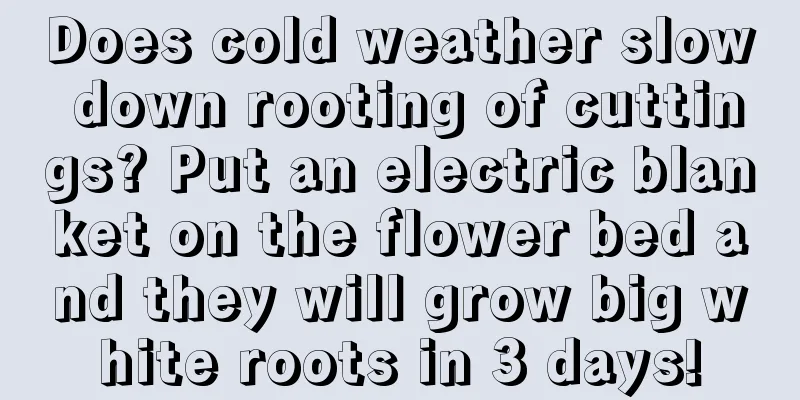Blue bean cultivation methods and precautions

1. Maintenance methods1. Substrate selection: Blue beans prefer sandy loam rich in humus, but can also adapt to poor soil. The soil should be loose, fertile, and well-breathable sandy soil, which can be mixed with leaf mold, river sand, garden soil, slag, etc. 2. Light management: Blue beans like places with plenty of sunlight indoors. They can be kept well ventilated in the high summer temperatures and kept at around 10℃ at night to adapt to a certain temperature difference. They can be watered appropriately to allow the plants to continue growing. 3. Water management: Do not water too much at normal times. Usually, you don’t need to water unless the soil is dry. When watering, you need to water it thoroughly. Do not allow water to accumulate in the pot or be exposed to rain, otherwise the roots will rot. When the weather is dry, sprinkle water around the plant. 4. Nutrient management: Use low-nitrogen, high-phosphorus and potassium compound fertilizer once every 20 days. Do not splash the fertilizer on the leaves when using it. The best time to do this is in the morning or evening on a sunny day, and water once on the same day or the next day to dilute the remaining fertilizer. 2. Breeding techniques1. Repotting: It is a small to medium-sized plant and needs to be repotted every 2 or 3 years depending on its growth. The diameter of the pot should be 1 or 2 inches larger than the plant, which is conducive to the growth of the plant. 2. Cuttings: During the growing season, place the plump fleshy leaves flat in the sand for cuttings. Keep the soil in the pot slightly moist. New buds will grow at the base. When they grow bigger, you can take them out and they will become new plants. 3. Problem diagnosis and treatment1. Root rot: Do not water too much at normal times, and do not allow water to accumulate in the pot or be exposed to rain, otherwise the roots will rot. It should be kept well ventilated and receive plenty of sunlight, and it will grow well. When the roots rot, remove the plant from the pot immediately and carry out pruning and disinfection. 2. Rust: You can spray 800 times diluted 75% Benomyl for prevention and control. The plants should also be isolated and the diseased leaves can be pruned according to the situation. IV. Other issues1. Whether it can be exposed to rain: It cannot be exposed to rain for a long time, and water cannot accumulate, otherwise it will cause heart and root rot. If the plant is exposed to rain, you should pay attention to drainage and reduce watering for a period of time afterwards. 2. Can it be grown at home: Yes, it can be grown at home. It is a blue succulent and very beautiful. It not only looks good, but can also purify the air and release oxygen, and it can also prevent radiation. |
<<: The cultivation methods and precautions of wild rice
>>: Cultivation methods and precautions of mountain orchid
Recommend
Daisy Flower Language
1. Flower language It is a plant of the Asteracea...
What are the breeding methods and precautions for money bag
Money Pocket Introduction Golden ginseng, also kn...
How to identify Changshan
1. Leaves The leaves of Changshan vary greatly in...
How to survive the summer in Fire Breathing Dragon
1. Normal sunlight Charizard is a summer species ...
Breeding methods and precautions of Benlong
1. Soil Benlong does not have many requirements f...
Pruning method of Photinia fraseri
Spherical pruning of Photinia fraseri Photinia fr...
How many lucky bamboos are usually grown in water? What kind of water should be used to grow lucky bamboos?
1. How many roots should you grow? When growing l...
How to care for the Iron Fan Princess Flower
Growth conditions of Princess Iron Fan The Iron F...
Causes and treatments for yellowing leaves of dianthus
1. Insufficient light 1. Reason: Indoor cultivati...
When is the best time to prune elmleaf plum
Pruning effect of elmleaf plum Because Prunus arm...
Cultivation methods and precautions of stinking peony
How to cultivate stinking peony illumination The ...
Breeding methods and precautions of the King of Fortune
1. Soil The requirements of the King of Fortune f...
What flowers are suitable for planting in tall flower pots
Reasons for not being able to fill with soil It c...
Lily planting method and time, what to do after flowering
1. Planting method 1. Time: The best time to plan...
How to care for hydroponic fortune tree
How to grow money tree hydroponically When hydrop...









